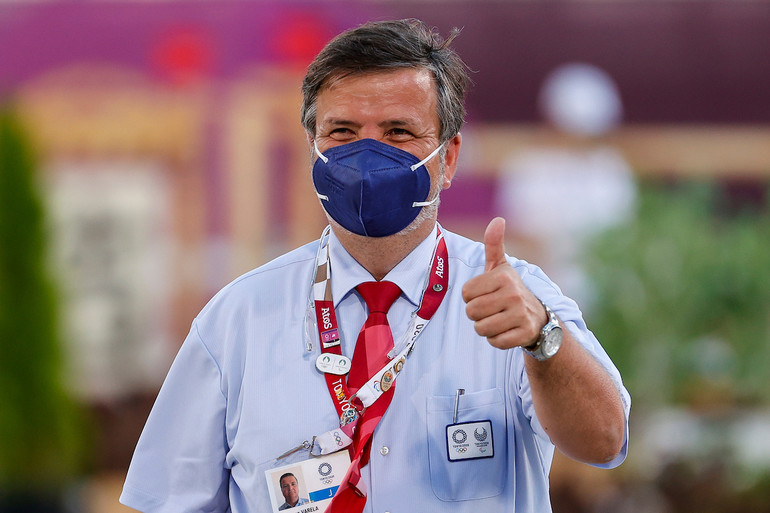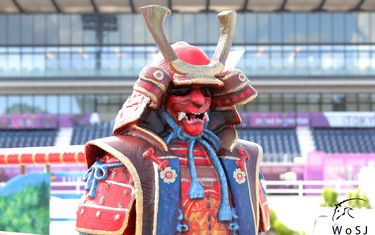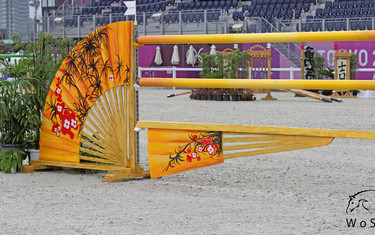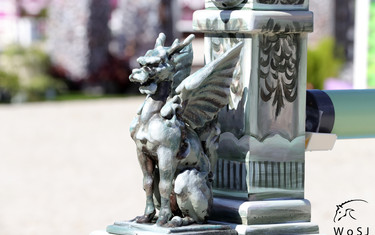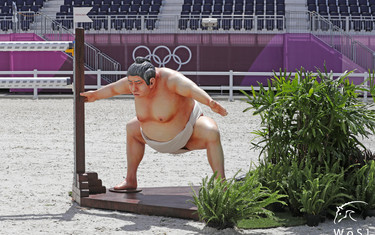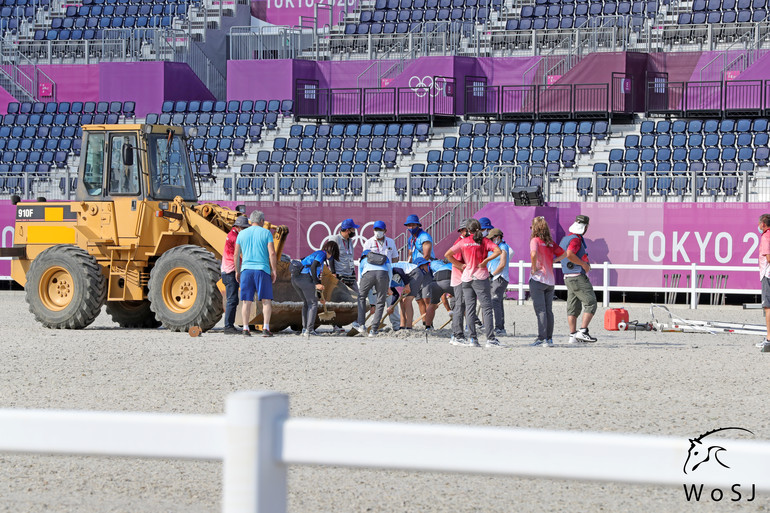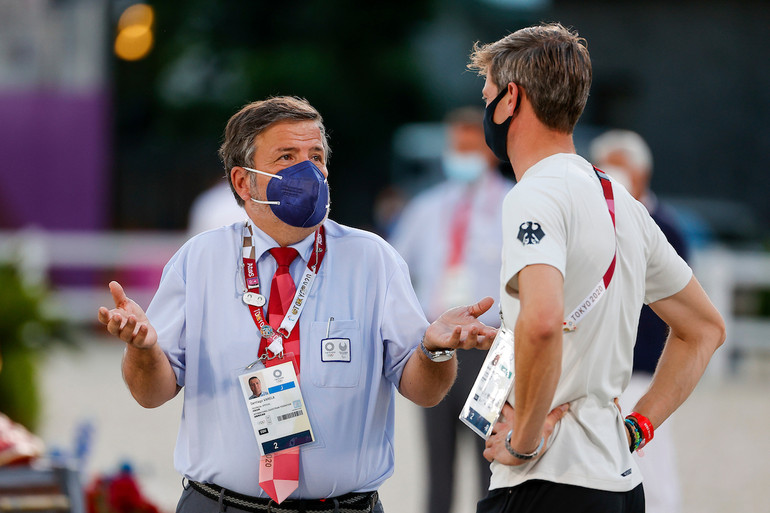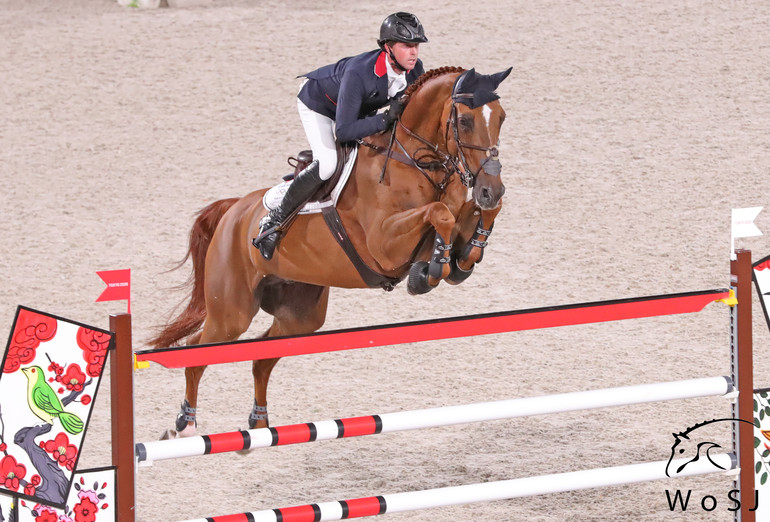Text © World of Showjumping
Spanish course builder Santiago Varela was given a monumental task when appointed to the responsibility of designing the jumping tracks at the Tokyo Olympics. Not only were these Varela’s first Olympics as a course designer, but the circumstances surrounding the event have been exceptional. Varela – the technical delegate at the 2016 Games in Rio de Janeiro – had a lot of issues to deal with, starting with the uncertainty created by the Covid-19 pandemic, then the new format introduced for the jumping competitions as well as last minute challenges caused by the flood lights in the arena at the Baji Koen Equestrian Park. However, Varela is a man who is used to obstacles – and he found a way to tackle them all.
World of Showjumping had a talk with the Spanish mastermind, who travelled to Tokyo with a clear mission: Despite all the debate surrounding the Games, he was there for the horses and for the horses only.
Nine designers, 112 fences on the draw board and 57 produced
From the moment Varela was appointed, he knew he was in for a challenge – and designing the tracks for Tokyo has taken three years of work from a group of twenty people. “My first thought was ‘My God, this will be complicated’,” Varela recalls. “From there on, I contacted the organising committee and planned a visit to Japan, started to educate myself on the country and tried to collect as much information as possible. I visited Tokyo, was in touch with the Japanese Embassy in Spain and I tried to talk to everyone about their expectations. We needed to study the Japanese culture to make sure it was correctly reflected in the course design, and we had to avoid anything that potentially could create a conflict in any way. We went deep on the study for the fence material. I used nine designers and from the 112 fences we designed, 57 were produced.”
We needed to study the Japanese culture to make sure it was correctly reflected in the course design.
The Covid-19 pandemic came as an additional challenge, creating plenty of uncertainty for Varela and his team. “There have been months of uncertainty when it comes to whether or not the Olympics would actually take place,” Varela says. “We had to manage our minds, stay focused and simply continue working, even if we believed that there was a 90% possibility that the whole event would be cancelled. This was not simple, as we had to keep on managing the design and the manufacturing of the material. To complicate things even further, we were not able to do a proper test of the arena lights due to the pandemic. The test was first done upon arrival in Tokyo, and unfortunately the plans that we had ready did not work out which meant we had to change all the courses.”
Lights and late nights
When Varela did the test event in 2019, the flood lights in the arena were not completed. A test of the lights prior to the Games kicking off was made impossible due to the Covid-19 pandemic, with the travel restrictions in force. “Finally, I had to do the light test on the 23rd of July. Then I discovered that the locations that I had selected for the open water jump were not safe. In my opinion, there was too much reflection in the water, so I needed to find other spots,” Varela says.
I only slept a few hours over the last 20 days.
“I only found two; the first I used in the individual competitions and the second in the team final. As a result of changing the location of the water jump, I needed to redo all the courses from scratch. I had started planning these courses three years prior, so you can imagine the stress. However, I had two plans: A Plan A and a Plan B. Nevertheless, all the courses were related to each other, so if I changed one line in one, I had to change the other courses too – it was like a domino-effect. In the original plans, one course was with the water jump and one without. I decided to make the effort to try and include it, because I thought it was important to keep this essential element of the course. For the overall balance, it makes a difference in the course. I took more risk trying to keep the water jump: It would have been easier to say ‘I don’t have the time and there is no safe possibility to include it’. This ended up being the biggest challenge for me: To build the Olympic Games in one week. I only slept a few hours over the last 20 days.”
Managing without a standard
The new format created an additional aspect to Varela’s course design. “As a course builder, I wanted to stay out of the discussion surrounding the new format. For me, it was the Olympic Games and whatever the system was, we had to follow the rules as they were. We could not do anything about it, but only manage it to the best of our ability,” Varela says. “We needed to manage a situation where there was no standard, and this was very difficult. When I started to think about solving this, my thoughts went back to Barcelona in 2013: That year we had a similar situation when the Furusiyyaa Nations Cup Final was introduced and no one knew how it would play out. My first goal is always to make sure the horses will jump good though, and then think about the result afterwards. Hence, I was focused on having three groups of riders: The top riders, the middle-class combinations, and those with good horses but without experience from these types of courses. Being fair to the horses is always my number one priority: In this case, I tried to come up with challenges that needed to be resolved by the riders but still gave the horses good options. We focused on this and, fortunately, we were very lucky because the first class ended up being fair and finally I believe it was all ok.”
We needed to manage a situation where there was no standard, and this was very difficult.
The first day of competition was nerve-wracking, Varela reveals. “We did not know how the horses would react to the footing and material,” Varela says. “After the first day, we calmed down though. For the individual final, we decided that ‘it is what it is’: We had 30 combinations qualified. In my opinion, the course in the individual final was very big and difficult, but we had to keep in mind that we had two more days to come. The problem with the individual final was that there were most likely three more rounds to come for the horses, which is what happened in the end. If you see the Swedish team, they needed to do six rounds so you need to be fair to the horses. We always have to keep our mind on the horses, not on our own ego. We aimed for three clear rounds in the individual final, but in the end we had six: The horses jumped extremely brilliant.”
Being fair to the horses is always my number one priority.
After the individual final, Varela was convinced that he did not have to ask much more in the team final. “Only, there was added pressure on the riders because they had three members each rather than four and no drop score,” he says. “What I had to think about was how to protect the horses. The second part of the Olympics was easier for me; after two days of jumping, I knew the conditions in the arena, I could calculate the time allowed perfectly – easy is maybe not the word, but it was more comfortable because I had more information. The final course for the team competition was not big but technically speaking, it was extremely complicated. If you take into account that this was the fourth day of jumping, how technical it was and that the teams had no drop score – in combination these factors made the course hard.”
The horses come first
“I have been a course designer for over 35 years and being in this position now, I cannot explain my feelings,” Varela tells about his thoughts after the turbulent time in Tokyo. “For me, it has been a hard time but now I am the happiest man in the world. The horses and riders did their job brilliantly. First of all, this sport allowed me to be a part of the Games, secondly be a part of a successful Games in complicated times and I can only thank the horses and the riders who allowed me to be in this position. The best moment was after the first day, when I felt we were on the right track. This allowed me to calm down and each day that followed was better. When it was all over, the horses had jumped well and people were happy.”
Wherever you are, you are always there with one target: The horses come first. The results are secondary.
“I never expected to be an Olympic course designer – it was like a dream I did not think would come true,” Varela continues. “Now, I am so tired, but so happy. This is my passion and for us, the horses are our life. This was not a Grand Prix, this was the Olympic Games and I was stressed to manage this situation. I tried to do it the best I could, and I believe I have not yet understood what has happened. I just arrived home, and have not watched the replays. I will try to watch it all and see what has happened during the last week. In any case, I cannot put my feelings into words. My only goal as the man in the middle, was to be as good as possible. I cannot tell you if the format is the right one or not, this is not my role. As a course designer, I have to manage what I am given – even in situations where people cannot agree, I have to do my best for the horses. The horses are the stars, and we have to protect them – this is our job. Wherever you are, you are always there with one target: The horses come first. The results are secondary.”
No reproduction without written permission, copyright © World of Showjumping



